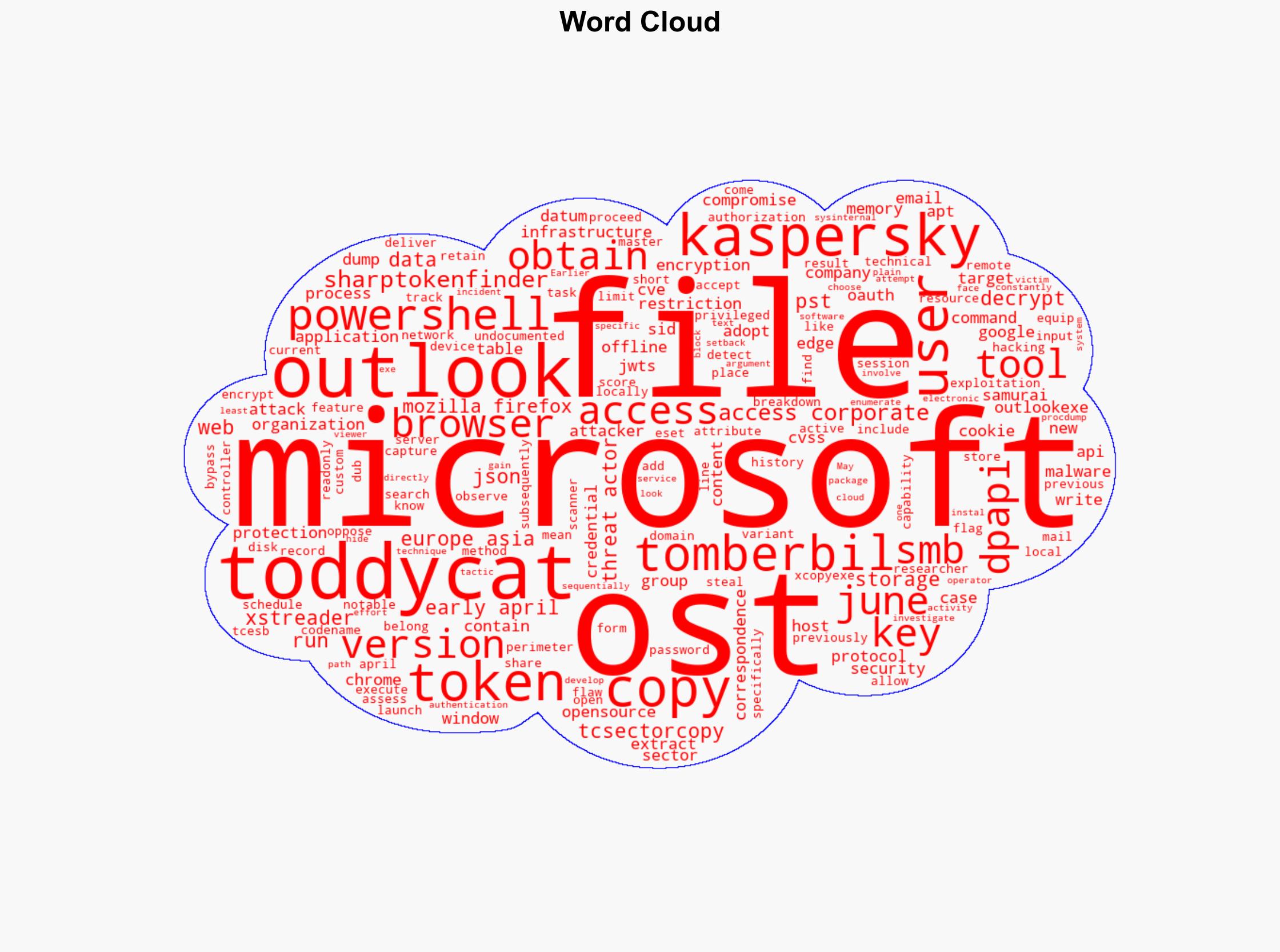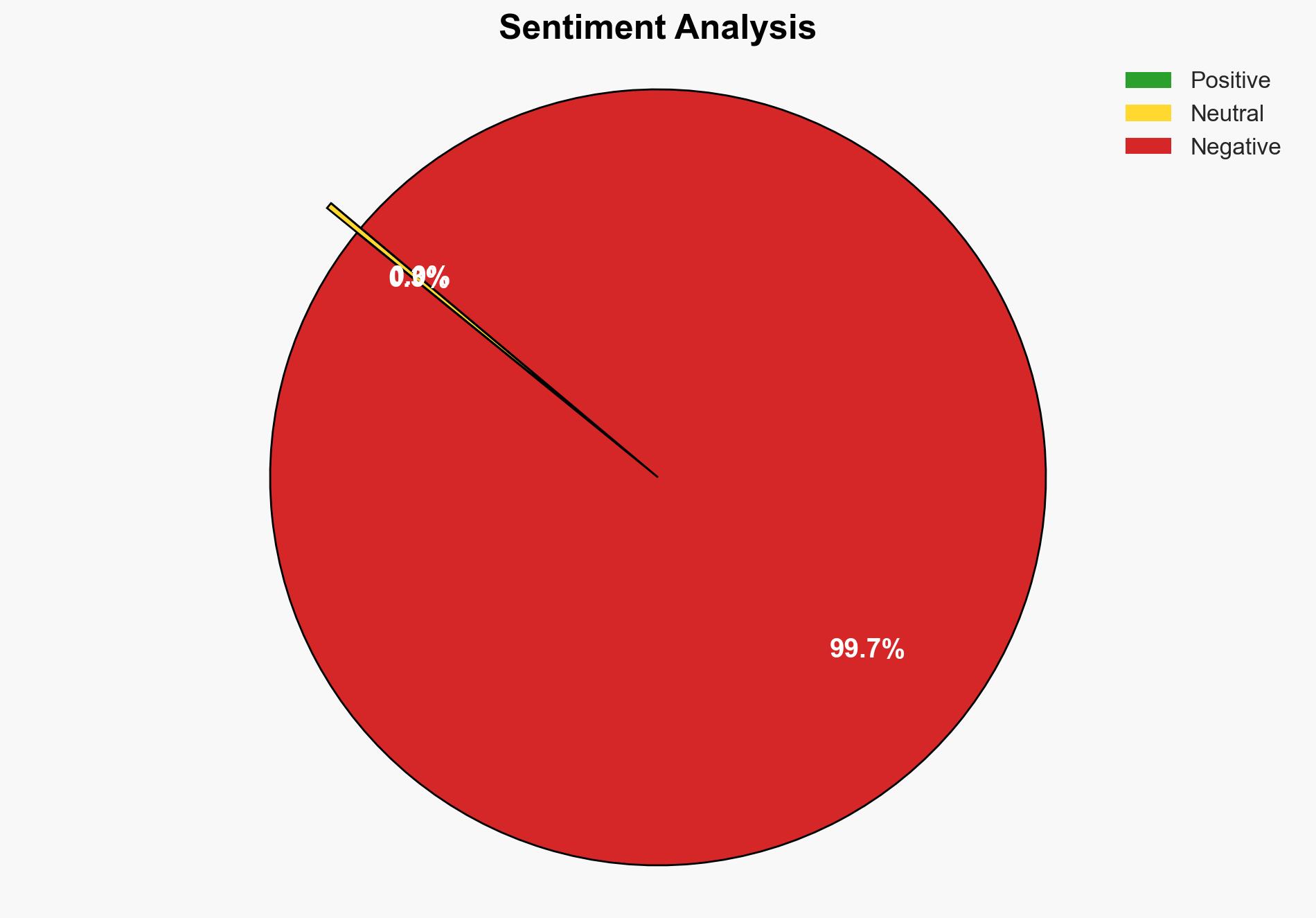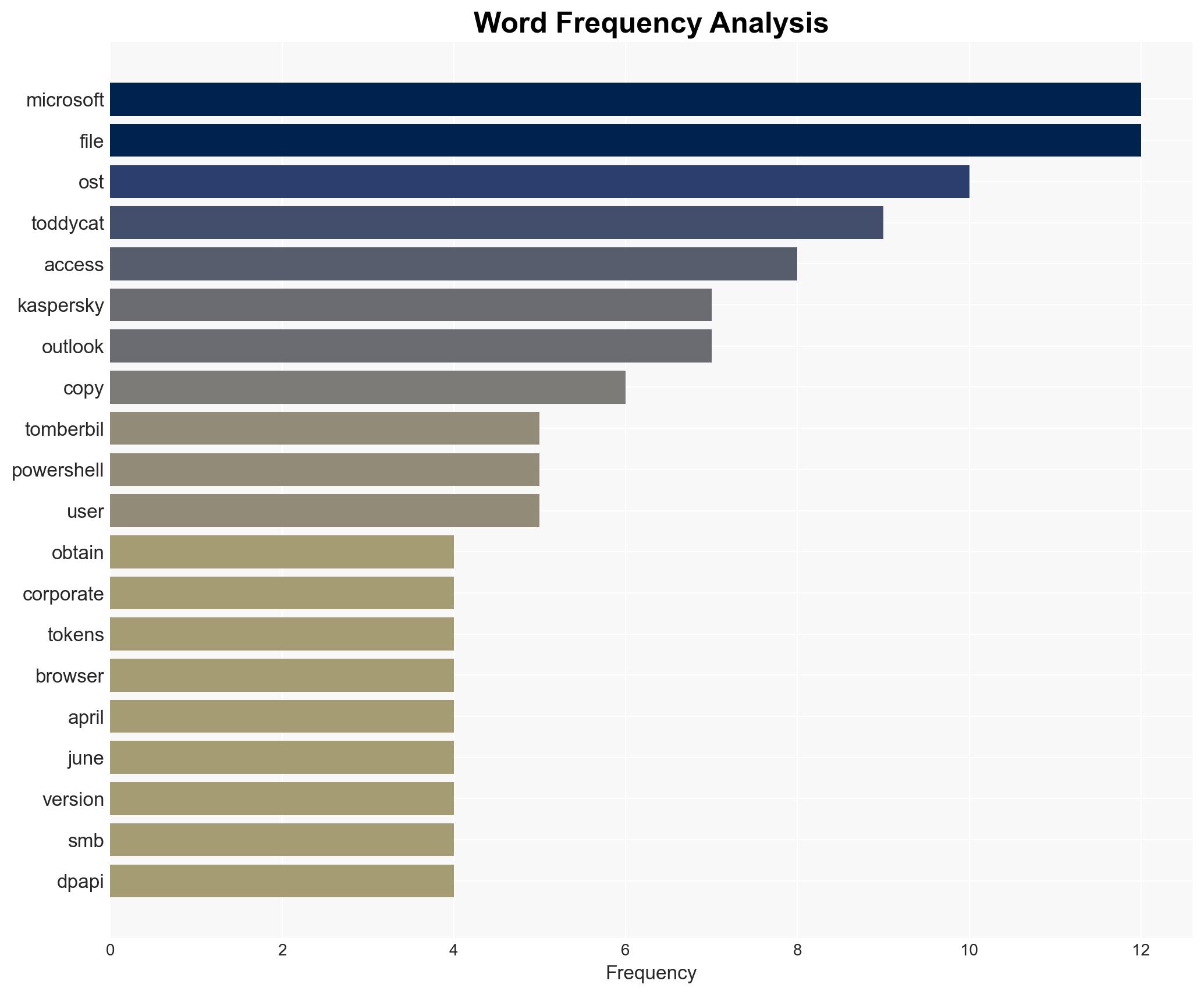ToddyCats New Hacking Tools Steal Outlook Emails and Microsoft 365 Access Tokens
Published on: 2025-11-25
AI-powered OSINT brief from verified open sources. Automated NLP signal extraction with human verification. See our Methodology and Why WorldWideWatchers.
Intelligence Report:
1. BLUF (Bottom Line Up Front)
The ToddyCat APT group has developed sophisticated tools to compromise corporate email systems, leveraging both custom malware and open-source tools. The most supported hypothesis is that ToddyCat is enhancing its capabilities to target high-value organizations in Europe and Asia, aiming to exfiltrate sensitive information. Confidence Level: Moderate. Recommended actions include enhancing email security protocols, conducting regular security audits, and monitoring for indicators of compromise related to ToddyCat’s known tactics.
2. Competing Hypotheses
Hypothesis 1: ToddyCat is primarily focused on corporate espionage, targeting organizations in Europe and Asia to steal sensitive data and gain competitive advantages.
Hypothesis 2: ToddyCat’s activities are state-sponsored, aiming to destabilize or gain strategic insights into geopolitical adversaries by targeting critical infrastructure and high-value targets.
Hypothesis 1 is more likely given the focus on corporate email systems and the use of tools to extract business-related data. The pattern of targeting suggests a financial or competitive motive rather than purely geopolitical.
3. Key Assumptions and Red Flags
Assumptions include the belief that ToddyCat’s primary targets are corporate entities rather than government agencies. A red flag is the potential underestimation of ToddyCat’s capabilities to pivot to more strategic targets. Deception indicators include the use of open-source tools, which may be a deliberate attempt to obscure attribution or intent.
4. Implications and Strategic Risks
The primary risk is the potential for ToddyCat to access and exfiltrate sensitive corporate data, leading to financial losses, reputational damage, and competitive disadvantage. Escalation scenarios include potential retaliation from affected organizations or countries, leading to increased cyber conflict. There is also a risk of ToddyCat’s tools being adopted by other threat actors, amplifying the threat landscape.
5. Recommendations and Outlook
- Enhance email security protocols, including multi-factor authentication and regular audits of access logs.
- Conduct threat hunting exercises focused on ToddyCat’s known tactics, techniques, and procedures (TTPs).
- Collaborate with cybersecurity firms and government agencies to share intelligence and strengthen defenses.
- Best-case scenario: Organizations successfully mitigate ToddyCat’s attacks, leading to minimal data loss and disruption.
- Worst-case scenario: ToddyCat successfully exfiltrates sensitive data from multiple high-value targets, leading to significant economic and strategic impacts.
- Most-likely scenario: Continued attempts by ToddyCat to refine their tools and techniques, with periodic successful breaches.
6. Key Individuals and Entities
No specific individuals are named in the report. Key entities include ToddyCat APT group, Kaspersky, and targeted organizations in Europe and Asia.
7. Thematic Tags
Cybersecurity, Corporate Espionage, APT Groups, Email Security, Information Security
Structured Analytic Techniques Applied
- Adversarial Threat Simulation: Model and simulate actions of cyber adversaries to anticipate vulnerabilities and improve resilience.
- Indicators Development: Detect and monitor behavioral or technical anomalies across systems for early threat detection.
- Bayesian Scenario Modeling: Quantify uncertainty and predict cyberattack pathways using probabilistic inference.
- Network Influence Mapping: Map influence relationships to assess actor impact.
Explore more:
Cybersecurity Briefs ·
Daily Summary ·
Support us





